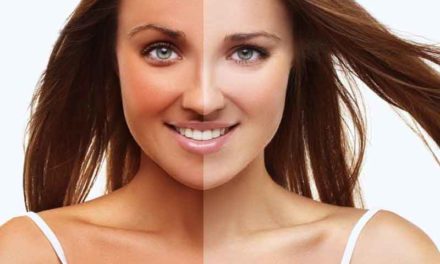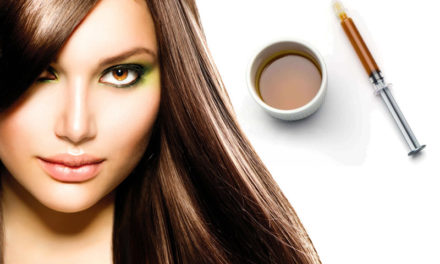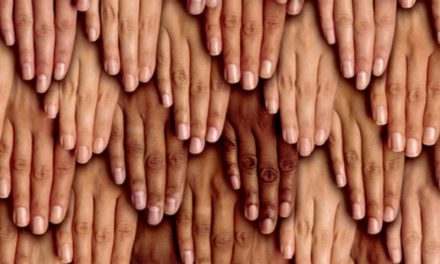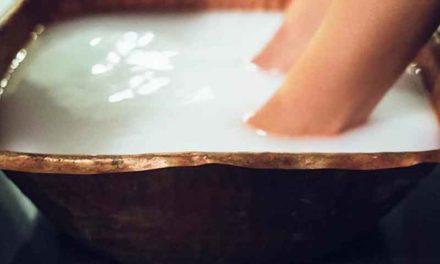Acne is a very common skin condition, especially for teenagers which is characterized by the appearance of red spots and pimples on face, shoulders, upper back or chest. Acne is a very stubborn affection and it is not easy to heal. That is why after winning the fight and making those nasty pimples go away, it is very disappointing when big scars are left behind to remind of all the pain and embarrassment one endured so far. One fight was won, but the war goes on because now you must find a way of getting rid of the scars as well. Most of this scare will fade away on their own after several months others will remain forever. Acne leaves behind physical and emotional damage which will last for a long while, but remembering that you are half way to achieving the clear skin you always wanted can motivate you to go on.
There a few things one can do, some tips and tricks, which could help improve the skin condition and boost your self-confidence. It is important to be very aware of your skin type and choose those that suit best your needs.
Don’t mistake acne marks for acne scars
There are two types of “trails” acne leave behind some are marks, while others are scars. In order to use the most effective treatment, it is important to know how to make the difference between them. Marks usually have a red or brown color and they are post-inflammatory hyperpigmentation which can be recognized if you gently stretch the skin and they will go away. These marks need between three to six months to heal on their own, but the process can by speed up a little with the help of some topical treatments which contain vitamin C, retinoids, sunscreen and certain over the counter brighteners.
On the other hand, scars are forever, and can be described as permanent indentations of the skin due to the collagen damage and they may have different forms and sizes. The most effective ways to improve their aspect is with the help of temporary dermal fillers or laser treatments. Scars care different from one individual to another, some are thick and stick up above the skin, others are a keloid, caused by the over-production of skin tissue, while in some cases they atrophic, they appear as depressions in the skin and they are the most difficult to treat.
Atrophic scars can be divided into three main types:
- Boxcar – have defined edges, rectangular shape with steep and broad.
- Ice pick – they are deeper than wide, sometimes they have the shape of a scooped out pore with jagged edges.
- Rolling – they are round depressions with sloping edges.
What are the causes for acne marks and scars?
Because marks and scars have different effects on the skin, they also have different causes. Marks, also known as post-inflammatory alteration, are the dark spots which remain on the skin after a pimple has healed. They are caused by the inflammation of the area during the healing processed. When a pimple is popped, the skin opens then closes back, and so is formed an abdominal texture and pigmentation that presents itself different from the rest of the skin. Even broken vessels can live behind some red or purple marks. They are more obvious in people with fair skin. Why some people are left with more marks than others is not yet completely known it is best to avoid popping, poking or picking any pimples though it is hard to resist.
Sometimes a very stubborn blemish is determined not to leave without a trace. Acne scars the skin by destroying the tissue and replacing it with fibrous tissue. Acne lesions are considered wounds by the body and in response, it sometimes produces too much or too little tissue. Too much causes keloid scars, while too little leads to atrophic scars. A pimple has more chances to become a scar the more it is squeezed or picked.
Sometimes, no matter how much you try to respect the skin routine and not stress a simple in any way, scars or marks still are left behind. In the case of people with the fair skin, they are mostly red, while for people with deeper skin tones they are darker. In addition to genetics, lifestyle habits can also make thing worse for scars or marks. For example, too much exposure to the sun can make these skin damages seem darker.
How to treat the marks left by acne?
Usually, the marks fade on their own after a while. There are certain treatments that can help you speed up the healing process a little bit:
- Vitamin C in the form of topical serum – can build collagen and stimulate the healing process, because vitamin C improves the skin absorption of the other active substances
- Chemical peel – milk solutions are applied on the skin in order to remove the damaged layers. Glycolic acid promotes the regeneration of skin cells so the skin tone will finally be even. There are some peeling products you can use at home, but it is better to ask a doctor to do the procedure in order not to make things worse.
- Retinoids – are a very effective treatment because it can make the skin cells divide faster and replace those with a discolored pigment. Retinoids increase the skin’s sensitivity to the sun so applying sunscreen is essential.
- Skin lighteners – they could help reverse the process of hyperpigmentation and stop further discoloration. Their results are more visible on the brown sports than on the red or pink ones. For them, pulsed dye laser is more suited because it targets the red pigments.
- Use sunscreen – sun rays can make the marks more obvious and they must be stopped from reaching the skin by using sunscreen. He latest formulas are acne friendly and won’t cause other outbreaks
If not of the treatments bring any improvement after three months it is better to ask a doctor to recommend a more powerful solution.
How can acne scars be healed?
Scars can’t be treated with over the counter medication they require intensive procedures which must be handled by a professional:
- Derma fillers – hyaluronic acid is used for more than making lips look fuller. This substance can fill up and elevate the area affected by depression making the scar less visible. Recently FDA approved the use of dermal fillers on patients over 21 years old. A substance called Bellafill can now be officially used for permanent correction of moderate and severe atrophic scars. The special formula of 20% polymethylmethacrylate stimulates the body to produce larger quantities of proteins in order to heal the skin and 80% collagen. All you need is one session of 30 minutes and maybe a little touch up is needed again a couple of months later.
- Injections with steroids – must be administrated by the dermatologist the day you feel a pimple has plans on making an appearance. Immediately, the inflammation is reduced and the cortisone can make keloids seem smoother.
- Laser – are very effective when it comes to reducing the redness of both marks and scars. There is a special laser, called pulse dye, which bring visible results. Unfortunately, the results are dramatically different from one individual to another because of two factors: the number of treatments each one has undergone previously and how much they are willing to reduce the social time. Lasers have mild side effects, with less redness and swelling, but they can’t be recommended for people with dark skin. The great result can be noticed on icepick scars because they are not as wide as the other types. The procedure starts with a small anesthesia and the doctor will cut out the scar with a small device and close the area with a stick which can be removed in just a few days.
- Mix and match – no two people are alike so the acne scars are different from one person to another. Sometimes one single procedure is not enough and the doctor must combine more types of treatments in order to make each type of scar less visible.
The bad news is that at some in life everyone might deal with acne marks and scars, but the good news is that they are no longer permanent. Doctors can use special procedures to improve your look, or you can use over the counter medication and heal faster the acne marks.
Home-made remedies to heal scars and marks left behind by acne
If the budget doesn’t allow you to schedule an appointment with a good dermatologist or you are more of the natural type of person and would like to try first some natural remedies you can make at home here are some tips and trick which might spare you some time and money. These remedies must be chosen according to your skin type, otherwise, instead of a smooth skin, you might end up with irritations or allergic reaction. So, if you are perfectly aware of what your skin needs you could try one of the following remedies:
- Lemon juice – has proven bleaching properties. But be careful and don’t apply them directly on the skin. First, it must be diluted an equal amount of water. Also, it is recommended to apply the solution only on the affected area and not the entire skin. Let it work for 15 to 20 minutes then rinse with warm water. Never forget to moisturize the skin after washing the lemon juice away. Instead of lemon, you could use lime just as well.
- Aloe Vera – the extract from this plan proved effective in treating a wide range of skin conditions like burns, wounds, and red pimples as well. It has great moisturizing properties which help the skin cells regenerate. Aloe Vera sap can speed the healing process of the acne if applied directly on the affected area.
- Cucumber facials – unlike the lemons, cucumber can be used to form a paste which can be applied on the face because it doesn’t sting. On the contrary, cucumber facials are very helpful for treating acne and scars because of its lighter At the same time, it is a natural moisturizer for the skin. You can rub cucumber juice on the scars and let it dry over the night.
- Baking soda – can be used for exfoliation of the skin and it has special abilities to lighten the scars on the skin. Form a paste of one tablespoon of baking soda and two of water. Apply this mixture on the face and rub gently with round movements and make sure to insist on the sacred Keep doing this for about two minutes and then wash your face.
- Vitamin E – is well known for its properties in healing skin. Vitamin E oil can improve the texture of the skin and lessen the scars if applied regularly. No remedy will bring result overnight, but with persistence and patience things will change for the best
- Honey – among its many healing properties are reducing pimples and acne. It is a natural and powerful antibacterial agent which can reduce immediately the inflammation and the redness of the skin. It is a good remedy for those which sensitive skin.
- Vitamin E – is well known for its properties in healing skin. Vitamin E oil can improve the texture of the skin and lessen the scars if applied regularly. No remedy will bring result overnight, but with persistence and patience things will change for the best
- Tea tree oil – is a very powerful antiseptic agent well known for its properties in curing acne and destroy bacteria
- Ice cubes – the redness and inflammation can be reduced immediately by applying ice cubes wrapped up in a clean piece of cloth for a couple of minutes of the affected area.
- Aromatherapy – is another way to reduce the appearance of acne. Some people consider that rose o lavender water can cure acne, but they don’t have many anti-inflammatory or anti-bacteria properties. Aromatherapy helps one relax and reduce stress which can restore the hormonal balance in your body and so the acne is reduced. Using this kind of treatment will not bring a noticeable improvement, but it will not make things worse either. If you suffer from acne related to hormones and stress, and not bacterial acne, and all the other treatments failed, go ahead and boil rose petals or lavender and use I to rinse our face.
These remedies are a natural alternative to over the counter acne products or complex procedures made by dermatologists. For mild cases of marks and scars left by acne you could try some of these recipes before spending a small fortune on other products. The best thing about home-made remedies is that they are completely natural and the risk of causing side effects is almost inexistent. It is important to be aware of your skin type and its needs in order to use the most appropriate remedy. For example, if you have sensitive skin, honey could help you improve its condition, while lemon juice could cause some irritations.
Final Thoughts
In order to reduce the appearance of skin marks and scars caused by acne, there are a few simple adjustments you can make in the daily routine. They are not drastic changes In the lifestyle, but more of little actions which can bring major benefits:
- Use skincare products that match your skin type – using harsh products for the skin hoping to reduce scars faster will only create even more damage. Hot water, sponges, rough facecloths or loofas are also on the do not use list. If your skin reacts to a certain product stop immediately the use
- Always apply sunscreen before going out – UV rays can make the marks and scars get darker and more obvious
- Stop picking pimples – even if it is hard to resist try not to touch those red spots as you will only make thing worse and ensure yourself the scars
- Exfoliate regularly – removing the dead skin cells will reduce the appearance of acne and make your skin look fresh. Exfoliating stimulates the production of new skin cells and it will make the healing scars process work faster
- Have a balanced diet – keeping your body healthy and hydrated will show on the skin
Acne scars and marks are a very disturbing memory of your fight with acne, but they are not challenges impossible to overcome. There are many options available for your problems no matter how severe they are. According to your condition, you can find a natural home-made remedy, use over the counter lotions or go to a doctor to perform a more complex procedure. Anyway, the dream of having a smooth and even skin is not impossible.
Resources:






